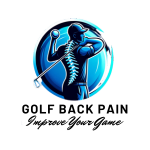Preventing and Alleviating Golf Back Pain: Understanding Slice or Hook Due to Improper Clubface Angle
Golf is a sport that requires precision and technique. However, even the most experienced golfers can struggle with common swing errors, such as a slice or hook due to improper clubface angle. These issues not only affect the accuracy of your shots, but they can also lead to back pain and discomfort. In this article, we will delve into the causes of these swing errors and provide tips on how to prevent and alleviate them. Whether you’re a beginner or a seasoned player, understanding the importance of proper clubface angle can greatly improve your golf game and overall enjoyment of the sport. So let’s dive in and explore the world of golf swing techniques and troubleshooting common errors.
To fully understand the effects of improper clubface angle on your swing, it is important to first understand the mechanics of a proper golf swing. The clubface angle refers to the position of the clubface at impact with the ball. If the clubface is open (facing away from you) or closed (facing towards you) at impact, it can cause a slice or hook respectively.
These shots not only result in a poor shot but can also put strain on your back due to the unnatural movement of your body trying to compensate for the incorrect angle.
To prevent and alleviate this issue, it is crucial to work on your swing mechanics and ensure that you are properly aligning the clubface at impact. This can be achieved through proper grip, stance, and rotation of your body during the swing.
Additionally, incorporating exercises and stretches that target the muscles used in your golf swing can help improve your overall fitness and prevent back pain.
Proper Grip
A proper grip is essential for a consistent and accurate swing. Make sure your grip is not too tight or too loose, as this can affect the angle of the clubface at impact.
Improving Your Swing Mechanics
To prevent a slice or hook due to improper clubface angle, it is important to focus on your swing mechanics. This includes your grip, stance, and rotation of your body during the swing.
Stance and Alignment
Your stance and alignment are key factors in determining the angle of your clubface at impact. It is important to ensure that you are properly aligned with your target and that your feet are shoulder-width apart.
Proper alignment means that your feet, hips, and shoulders should be parallel to your target line. This helps to ensure that the clubface is also square to your target at impact, reducing the chances of a slice or hook.
Additionally, having your feet shoulder-width apart provides a stable base for your swing, allowing for better weight transfer and balance throughout the swing.
Exercises and Stretches for Golfers
Incorporating exercises and stretches into your routine can help improve your overall fitness for golf and prevent back pain.
Focus on exercises that target the muscles used in your golf swing, such as your core, glutes, and back muscles.
Core exercises are essential for a strong and stable golf swing. Planks, side planks, and Russian twists are great exercises for strengthening your core and improving your balance on the course. Glute exercises are also important for a powerful swing. Squats, lunges, and hip bridges are all great options to target your glute muscles. Finally, don’t neglect your back muscles. Strengthening exercises like rows, pull-ups, and back extensions can help prevent strain on your back during your swing.
In addition to targeted exercises, incorporating stretches into your routine can help improve flexibility and prevent muscle tightness that can lead to back pain. Hamstring stretches, hip flexor stretches, and thoracic spine stretches are particularly beneficial for golfers.
Body Rotation
In order to have a successful golf swing and prevent back pain, proper body rotation is crucial. The rotation of your hips and shoulders should work together to ensure that the clubface stays square at impact. This means that your hips and shoulders should rotate at the same speed and stay in sync throughout your swing.
When your body rotates correctly, it allows for a smooth and fluid swing. This helps to evenly distribute the force throughout your body and reduces the strain on your back. If you have improper body rotation, it can lead to an inconsistent swing and increase your risk of injury.
To improve your body rotation, it is important to work on your flexibility and core strength. A strong core will help you maintain balance and control during your swing, while flexibility will allow you to rotate more smoothly.
Practicing drills that focus on body rotation can also be beneficial. One drill is to place a club across your shoulders and rotate your hips and shoulders together as if you were taking a swing. This will help you get a feel for the correct movement and build muscle memory.
Remember, proper body rotation not only improves your performance but also helps prevent back pain caused by improper clubface angle. By incorporating exercises and drills into your practice routine, you can improve your body rotation and enjoy a pain-free golf game.
By understanding the effects of improper clubface angle on your swing and taking steps to improve your mechanics, you can prevent and alleviate golf back pain. Remember to focus on your grip, stance, and body rotation, as well as incorporating exercises and stretches into your routine. With these tips, you can improve your golf game without causing further injury to your back.

